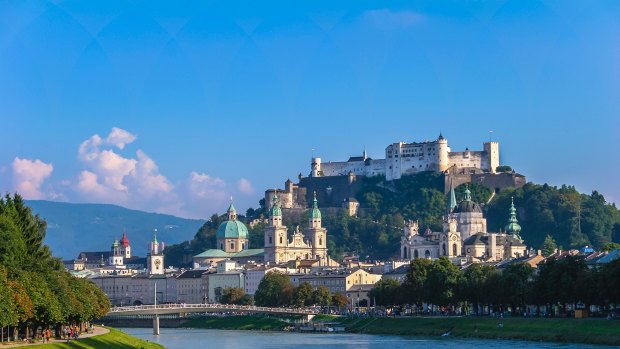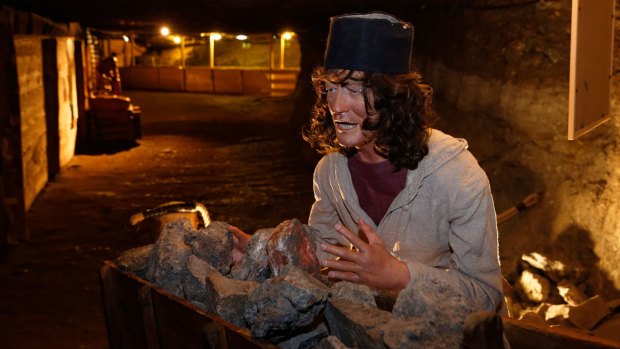This was published 8 years ago
Salzburg, Austria: How one of Europe’s most incredible cities was built with… salt.

Built on salt: Salzburg, Austria.Credit: istock
Walking through Salzburg's cathedral, a masterpiece of beautifully-defined baroque decoration, a thought strikes. "This must have cost a fair amount."
The same thought comes to mind while lapping up the ridiculously over-the-top decoration in the Residenz cross the square, or while clocking any number of the palaces dotted around the city. Salzburg's opulence is totally out of context with its historic importance.
Salzburg was never the seat of a massive empire, or even a state that people anywhere else would really pay attention to. Until Napoleon came along and brought everything tumbling down in the 19th century, it was ruled by autocratic Prince Archbishops as an ecclesiastic microstate.

Deeply weird ... Salzburg's salt mine attraction.Credit: Alamy
They had no gold, no silver, no major port and no crucial status on an unavoidable trade route. So how did they afford to make the place look so spectacular?
Well, the clue is in the name. Salt may seem humdrum to us – something added in pinches to cooking or sat largely untouched on the kitchen table – but historically it has been extraordinarily valuable. Before refrigeration came along, covering food with salt was the best way of preserving it. Huge amounts of it were required to stop meat from going off - and it just so happens that the mountains around Salzburg are full of the stuff.
Deep below the surface of the area around Salzburg is an ancient underground sea, from which the water has long since evaporated. But tectonic activity has lifted parts of the terrain up, forming mountains and making those salt deposits much easier to get at.
The Celtic tribes living in the area 2500 years ago were the first to mine it – and the amount of gold, ivory and amber found in their graves suggests doing so made them wealthy. First they took what could be found from natural salt water springs, but then they started digging tunnels into the mountainside.
Over the years, those tunnels were made larger and became an extraordinary underground network that can be visited today. The Salzwelten mine at Bad Dürrnberg finally stopped operating in 1989, and has now been turned into a deeply weird tourist attraction. It starts with a ride on a rudimentary train through one of the tunnels, continues down to the lower levels via giant wooden slides and culminates in a boat ride across an underground lake amidst a frankly bonkers light and sound show. On the way through, the tour crosses the border into Germany – centuries old treaties have allowed the miners to dig on Bavarian territory as long as they enter from the Salzburg side. It is ludicrously good fun.
It's not all about silly novelty transport, though. Large projections on the way through take novice pseudo-miners through the history of salt mining in the region, using hammily-acted videos to tell it from key characters' point of view.
One of these is Archbishop Wolf-Dietrich, who is responsible for much of Salzburg's baroque makeover. And he freely admits that the taxes paid by his citizens don't bring nearly as much into the coffers as the salt from the mines.
But the secret ingredient is the Salzach River, by which Salzburg is divided. The salt was sent down it in barges, to the river Inn, then finally the Danube and the rest of Europe. But the water became crucial too.
In the 12th century, the miners worked out that instead of digging the salt out bit by bit, they could dig holes then fill them with water. That water, left for six or seven weeks, turned into brine which was then pumped out and boiled, leaving just the salt behind. This extraction-by-leaching managed to turn labour-intensive, back-breaking work into a scalable industry.
And the tons of "white gold" that resulted were turned into the real gold that dazzles in Salzburg's palaces today.
The salt mine tour can be booked online via salzwelten.at.
The writer was a guest of Salzburg Tourism. See Salzburg.info.
See also: 20 things that will shock first-time visitors to Europe
See also: Austrian town is the most beautiful place to die
Sign up for the Traveller Deals newsletter
Get exclusive travel deals delivered straight to your inbox. Sign up now.